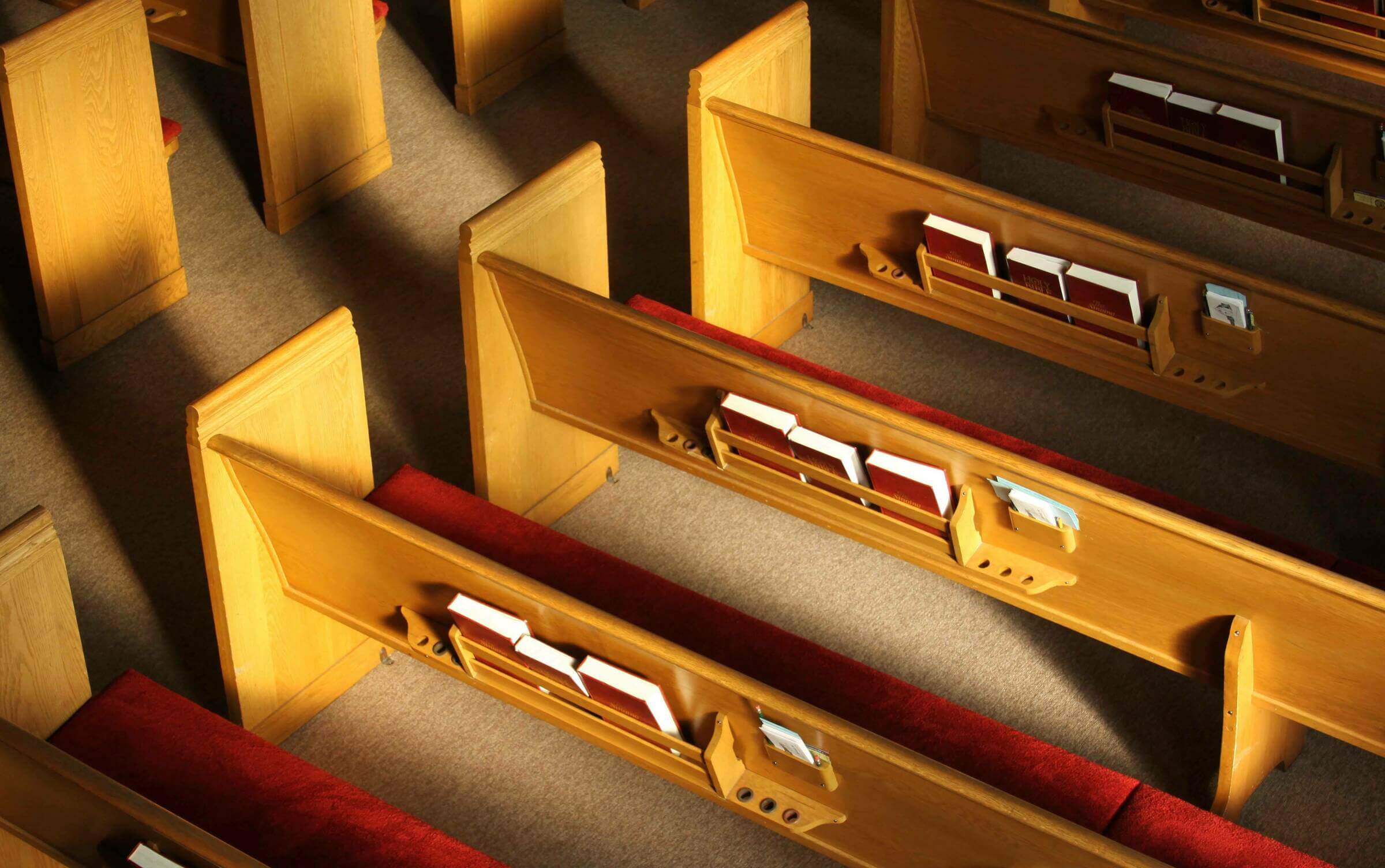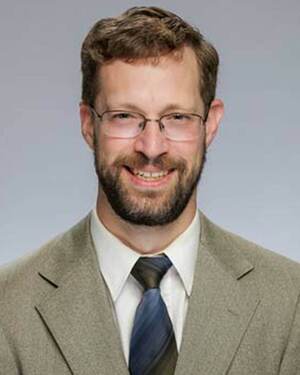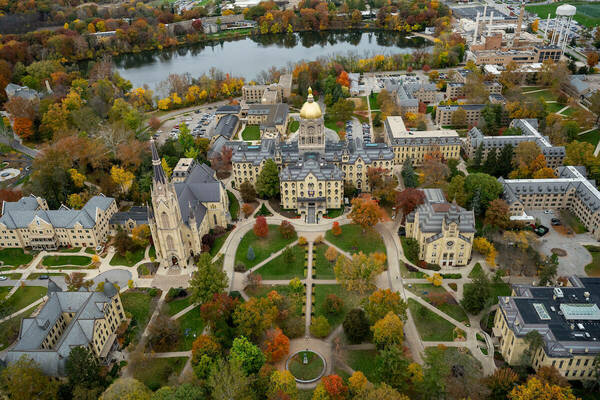Upward trend in ‘deaths of despair’ linked to drop in religious participation, economist finds

Over the past 20 years, the death rate from drug poisonings in the U.S. has tripled and suicide and alcoholic liver disease death rates have increased by 30 percent — particularly among middle-aged white Americans, according to studies by the National Center for Health Statistics.
Further evidence shows that these dramatic changes in mortality rates within American communities actually began in the late 20th century, but researchers have been unable to pinpoint a cause for these “deaths of despair.”

To fill that gap in understanding, Daniel Hungerman, professor of economics at the University of Notre Dame, and his co-authors studied the connection between a sharp downturn of religious participation in the late 1980s and the swift rise in deaths of white Americans ages 45 to 54 in the early 1990s. Their findings were recently issued in a working paper by the National Bureau of Economic Research.
While the post-1999 mortality increase has justifiably attracted a large amount of attention with the introduction of OxyContin, “this change in the early 1990s is perhaps as striking but has received little attention in prior work,” the researchers explained.
“It’s pretty unusual for an advanced country like America to see people start dying sooner, at a younger age,” Hungerman said. “And what we found is that there is a direct correlation between the effects of religious practice and these mortality rates from alcoholism, suicide and overdose.”
Their study highlighted how changes in religious participation can have large consequences for the health and well-being of middle-aged, white individuals, wrote Hungerman and his co-authors.
“Our work provides evidence that religious participation matters,” they said.
Bringing the data together, comparing
Comparing mortality data from the Centers for Disease Control and Prevention’s Multiple Cause of Death files and religiosity survey data from the General Social Survey, the researchers identified a definite correlation between the decline in religious affiliation and church attendance and the increase in deaths of despair among middle-aged white Americans that began in the late 1980s and continued through the 1990s.
Researchers also found that states that had experienced larger declines in religious participation in the last 15 years of the century saw larger increases in deaths of despair. Notably, the decline in religious participation was not specifically driven by males or females, nor was it initially observed for non-white Americans.
Hungerman and his co-authors presented evidence that this decline in religious participation was driven more by a collective resistance to formal or organized religion than by changes in personal religious beliefs or spiritual habits.
“What happened is that they quit going to church — they stopped affiliating with religious places,” Hungerman said. “But if you ask them, ‘Do you believe in God,’ then that is still a constant. It has more to do with the social aspect of the formal participation.”
One explanation for the decline in religious activity is the shifting relationship between religion and politics, Hungerman theorized. “There are some indications that more progressively oriented individuals stopped affiliating with religion,” he said. “Another is an increase in education — those educational gains may have led to lower participation.”
The causes of the decline in religiosity and religious participation are less important than the consequences, however, Hungerman said. “We’ve accepted this decline has occurred, and now we want to show what it has caused in people’s lives.”
Historical ‘shocks’ contribute to decline
The researchers considered two additional “shocks” occurring at different times in our history that seem to have also contributed to the decrease in faith activities and increase in mortality. One was the repeal of the blue laws in the 1960s and 1970s. These laws restricted commerce during a certain time of week, typically Sunday mornings. Unlike some blue laws of today, which limit alcohol sales on Sundays, the earlier iterations prohibited all labor on that day — which allowed more people to attend church versus working or going shopping. According to the researchers, repealing the blue laws led to a 5-10 percent negative impact on weekly attendance of religious services for middle-aged Americans and increased the rate of deaths of despair by two deaths per 100,000 people.
The second shock occurred much later with the increase of opioid use in the 1990s, particularly following the introduction of the prescription drug OxyContin in 1996 and its subsequent abuse.
“With these sorts of shocks occurring, we see — for the groups affected — a coinciding change in suicides, heavy drinking and drug use,” Hungerman said. “We’re seeing these relatively smaller, earlier shocks as setting the stage for the later, larger effects (sharp mortality rate increases). We use that as another piece of evidence to help us better understand this relationship between what you’re doing on Sunday morning and your health outcomes.”
Cultural influence or true despair?
Scientists have had difficulty studying the cultural or social influences in this arena, Hungerman said. “Despite the title ‘deaths of despair,’ they have struggled to see whether or not despair actually plays any role here, or if it’s just a cultural anomaly, more generally. We think our research provides novel evidence that it does.”
Hungerman and his co-authors noted that prior studies have indicated nonreligious organizations are unable to provide the same sense of community, closeness and social service that religious traditions have typically supplied. And while they acknowledged that their study confirmed the importance of religion alone in promoting well-being, future research can be done to see if other cultural institutions — including voluntary and community activities — could have similar large-scale effects on health and mortality.
Latest Faculty & Staff
- Faculty receive prestigious early career awards from National Science FoundationDuring the 2024-25 academic year, four researchers in the University of Notre Dame’s Colleges of Engineering and Science received early-career awards from the National Science Foundation.
- In new research, Roy Scranton explores climate change and the limits of human progressIn his most recent book, “Impasse: Climate Change and the Limits of Progress,” Scranton, an associate professor of English, defines the impasse he sees as “not only political and institutional, but cognitive, existential and narrative” and asserts that the only path forward is through embracing what he terms ethical pessimism. “A lot of people confuse pessimism with nihilism, apathy and despair,” Scranton said. “But pessimism is actually about recognizing our limits, letting go of unrealistic goals, finding solidarity in the fact of human suffering and doing what you can now, not in some utopian future.
- Joule Bergerson, energy technology assessment expert, named new director of ND EnergyND Energy faculty director Joule…
- In memoriam: Alasdair MacIntyre, the Rev. John A. O’Brien senior research professor of philosophy emeritusAlasdair MacIntyre, the Rev. John A. O’Brien senior research professor of philosophy emeritus and a permanent senior distinguished research fellow at the de Nicola Center for Ethics and Culture, died on May 21, 2025. He was 96.
- Santiago Schnell, dean of Notre Dame’s College of Science, appointed as provost of DartmouthSantiago Schnell, the William K. Warren Foundation Dean of the College of Science at the University of Notre Dame, has accepted an appointment as provost at Dartmouth College. He will depart Notre Dame at the end of June and begin his new role in July.
- Notre Dame’s Fightin’ Irish Battalion receives Department of Defense award as nation’s top Army ROTC programThe United States Department of Defense honored the University of Notre Dame’s Army ROTC Fightin’ Irish Battalion as the nation’s top Army collegiate program for the 2023-24 academic year. This will be the first time the unit has received the department’s Educational Institution Partnership Excellence Award, which recognizes the program’s achievements in recruiting, educating, training and commissioning leaders of character to be the next generation of military officers.












